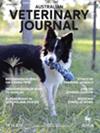Peri-parturient ewe mortality in commercial, southern Australian, non-Merino ewe flocks: establishing the frequency and investigating causes
Abstract
Background
The level and cause of ewe mortality over the peri-parturient period is poorly understood in Australia. The purpose of this study was to determine the frequency of peri-parturient ewe mortality and investigate the causes of death in commercial, non-Merino ewes over the peri-parturient period.
Methods
An observational study involving 50 commercial, non-Merino farms across southern Australia during two lambing seasons was conducted. The study population was the breeding flock of ewes on each farm. Ewes were monitored by farmers from the time they were first placed in their lambing paddocks before lambing, up until lamb marking (the lambing period). The project required no change to normal practice. Veterinarians conducted postmortem (PM) examinations at three time points on each farm over the lambing period. A standard PM protocol was followed by all participating veterinarians.
Results
The mean peri-parturient mortality over the lambing period was 2.5% in Year 1 and 2.0% in Year 2, with no significant difference between years. Factors that increased the risk of peri-parturient ewe mortality included ewe age (>5 years old) and litter size (triplet-bearing ewes). The most common causes of ewe death according to farmers was dystocia and unknown causes. The three most common diagnoses on veterinary PM examination were dystocia, septicaemia and trauma.
Conclusions
This study reveals the relative importance of each cause of ewe mortality over the peri-parturient period. Risk reduction could include identification and management of older ewes (aged above 5 years or older) and ewes carrying twins or triplets.


 求助内容:
求助内容: 应助结果提醒方式:
应助结果提醒方式:


